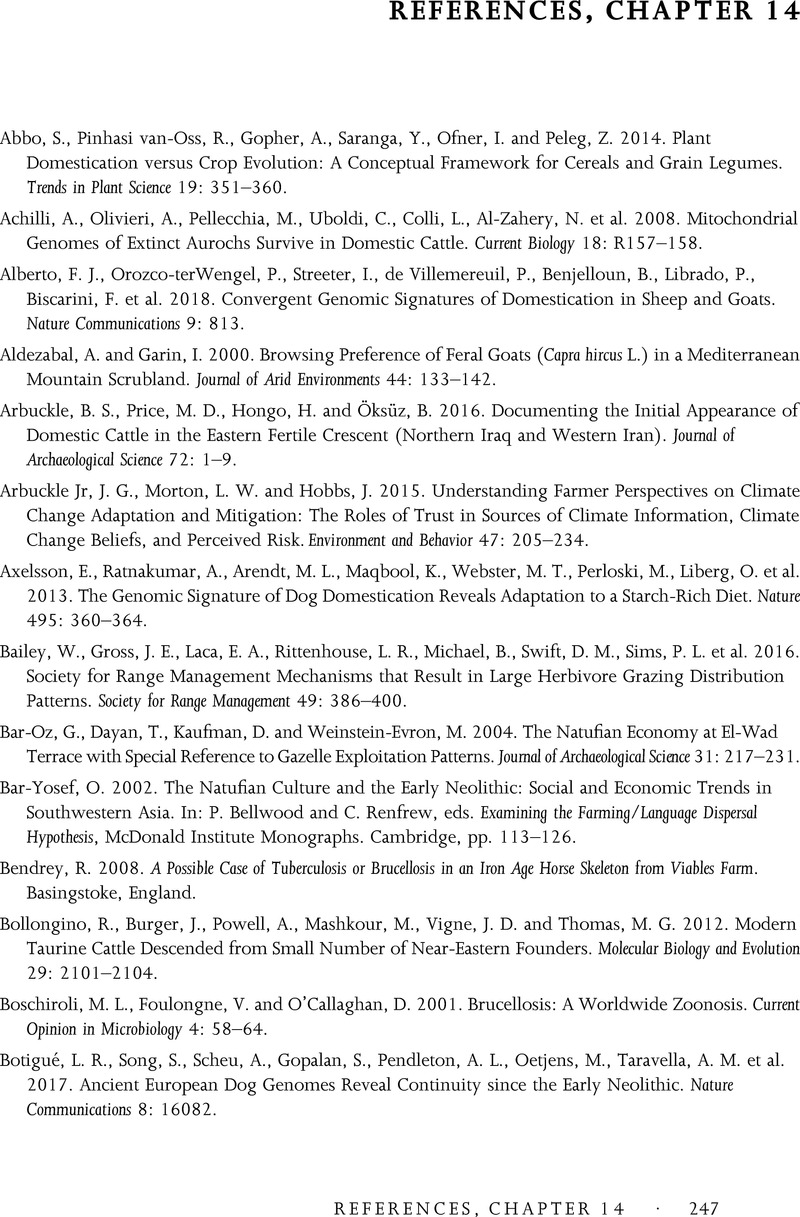Book contents
- Plant Domestication and the Origins of Agriculture in the Ancient Near East
- Plant Domestication and the Origins of Agriculture in the Ancient Near East
- Copyright page
- Contents
- Tables
- Foreword
- Foreword
- Preface and Acknowledgements
- Introduction
- 1 What Is the Agricultural Revolution?
- 2 From Hunter-Gatherers to Farmers in the Near East
- 3 Models That Describe and Explain the Agricultural Revolution, Including Plant Domestication
- 4 The Plant Formations of the Fertile Crescent and the Wild Progenitors of the Domesticated Founder Crops
- 5 The Difference between Wild and Domesticated Plants
- 6 Traditional versus Modern Agriculture – Stability vs Maximization
- 7 The Differences between Plant Domestication and Crop Evolution under Traditional and Modern Farming Systems
- 8 The Differences between Cereal and Legume Crops in the Near East
- 9 The Choice of Plant Species for Domestication
- 10 Where, When and How Did Near Eastern Plant Domestication Occur?
- 11 Domestication of Fruit Trees in the Near East
- 12 Plant Evolution under Domestication
- 13 A Global View of Plant Domestication in Other World Regions
- 14 Animal Domestication in the Near East
- 15 Plant Domestication and Early Near Eastern Agriculture
- Notes
- Further Reading
- References, Chapter 14
- Glossary: Basic Concepts in Genetics, Botany, Ecology, Agronomy and Zoology
- Index
- References
References, Chapter 14
Published online by Cambridge University Press: 12 March 2022
- Plant Domestication and the Origins of Agriculture in the Ancient Near East
- Plant Domestication and the Origins of Agriculture in the Ancient Near East
- Copyright page
- Contents
- Tables
- Foreword
- Foreword
- Preface and Acknowledgements
- Introduction
- 1 What Is the Agricultural Revolution?
- 2 From Hunter-Gatherers to Farmers in the Near East
- 3 Models That Describe and Explain the Agricultural Revolution, Including Plant Domestication
- 4 The Plant Formations of the Fertile Crescent and the Wild Progenitors of the Domesticated Founder Crops
- 5 The Difference between Wild and Domesticated Plants
- 6 Traditional versus Modern Agriculture – Stability vs Maximization
- 7 The Differences between Plant Domestication and Crop Evolution under Traditional and Modern Farming Systems
- 8 The Differences between Cereal and Legume Crops in the Near East
- 9 The Choice of Plant Species for Domestication
- 10 Where, When and How Did Near Eastern Plant Domestication Occur?
- 11 Domestication of Fruit Trees in the Near East
- 12 Plant Evolution under Domestication
- 13 A Global View of Plant Domestication in Other World Regions
- 14 Animal Domestication in the Near East
- 15 Plant Domestication and Early Near Eastern Agriculture
- Notes
- Further Reading
- References, Chapter 14
- Glossary: Basic Concepts in Genetics, Botany, Ecology, Agronomy and Zoology
- Index
- References
Summary

- Type
- Chapter
- Information
- Publisher: Cambridge University PressPrint publication year: 2022



